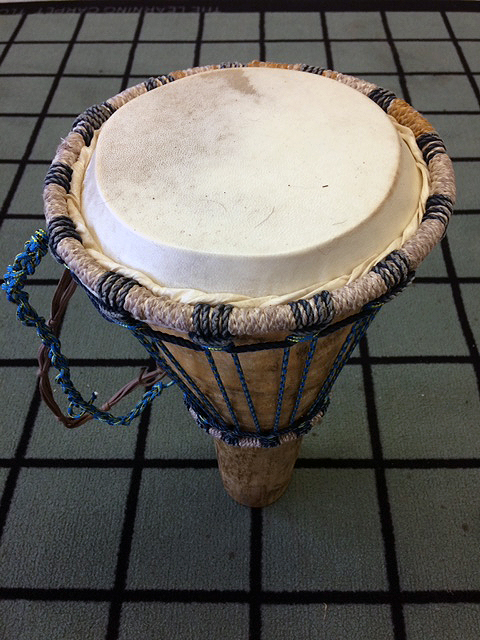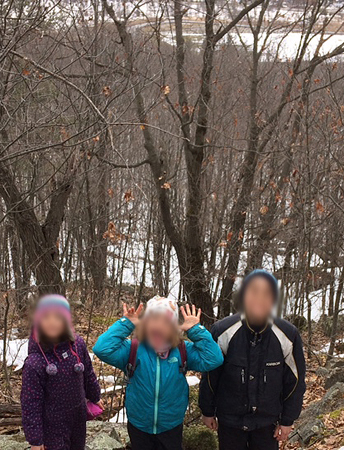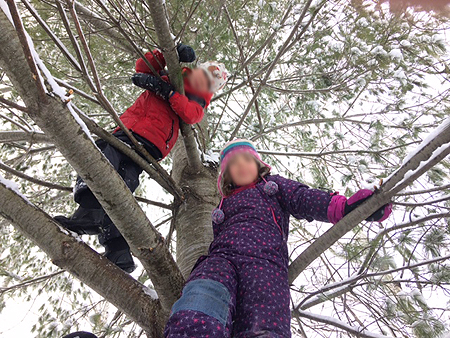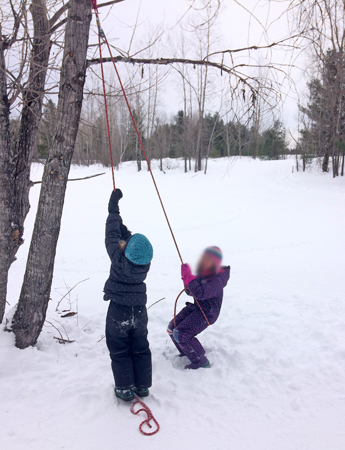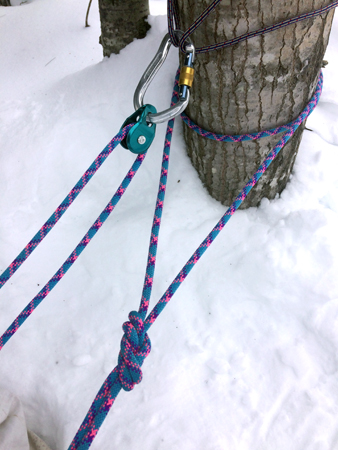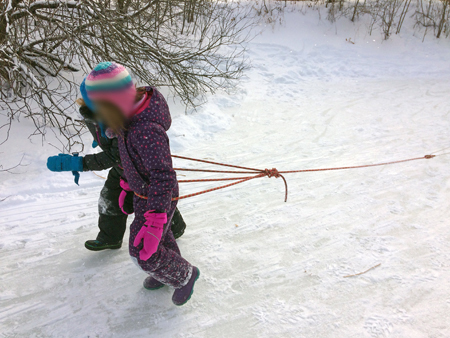One year ago – April 25, 2020 – I posted the first of my inquiry videos that set the tone of the 70 that have followed…
It all started shortly after COVID closed our schools. An educational assistant and teacher suggested I create a short video to share with the Grade 1s in our school. I didn’t take long to agree. Thanks Kristine and Jenna!
A big thanks to you, the students, teachers and families for watching and inspiring me to create more.
I had hoped to reach 1000 subscribers by the one year anniversary.
Today, there are 1107 subscribers.
Thank-you!
Please subscribe and click notifications on if you want to hear about the latest videos before everyone else!
Watch this recent video Swamp Sounds! What’s Making all that Noise?!
Category Archives: Interesting Links
#1177 Inquiry Video Anniversary (and Subscriber Goal!)
Shortly after COVID shut down live schooling a year ago, I created a video to support students learning from home…
Almost a year later, 70 inquiry videos support young students learning from home, public schools and forest schools. The videos support math, language, science through questions and curiosity – usually with an outdoor focus.
Since April 2020, the videos have boomed a little boom. At time of writing videos have attracted 981 subscribers. My goal is to exceed 1000 subscribers by the video anniversary – April 25, 2021.
Want to support young learners?
Subscribe!
… And click the notification bell to receive news of the latest videos:
The most viewed video:
One of my favourites:
Another favourite:
A recent video:
The first one in the style adopted:
Subscribe!
… And click the notification bell to receive news of the latest videos:
#1175 Inquiry: Barbed Wire Tree?!
I’ve heard of apple trees, maple trees and pine trees but recently I discovered a barbed wire tree! There is barbed wire growing out of this tree? Is that possible?
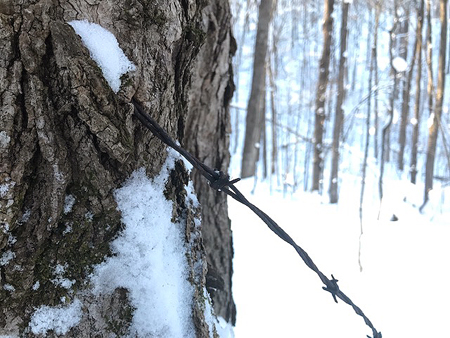
I want you to help investigate!
Watch this video:
Below the video, in the description when watched on YouTube, are questions, clues and links to help you find some answers about the barbed wire tree.
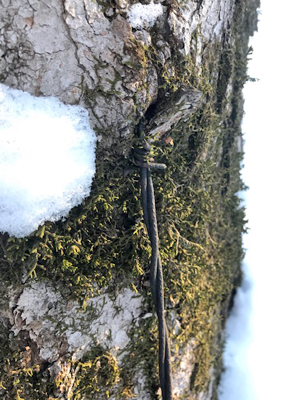
Write a story with words or pictures to explain how the barbed wire tree came to be!
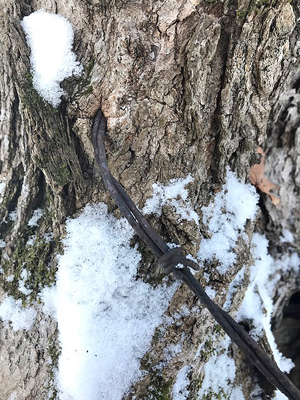
Like this challenge?
See all the inquiry videos with math, language and science challenges.
Subscribe and click the bell to get notifications!
#1163 The Inner Workings of a Bully (or a Shooter)…
What would make you:
Punch someone?
Explode in a rage?
Go on a shooting rampage?
I’m fascinated by what makes people tick.
And so an article caught my attention exploring the inner workings of an ‘almost’ mass shooter – “Trunk” (short for “Trunk full of guns”) was thankfully stopped before any shooting could happen. And he subsequently spent years in prison for what he had planned.
In the article, Trunk shares what was going on in his life at the time he was planning to cause destruction.
Illuminating.
He was a good kid. He was shy (or ‘bashful.’) He felt alone. He didn’t feel heard. This boy was the invisible child in the class that was often overlooked or asked to be quiet.
I see this often at schools:
• Two years ago I wrote a blog post with a story of a Grade Six good student who exploded at recess one day – hurling a discarded bag of dog feces across the school yard.
• One of my kind students uncharacteristically hit a classmate. Where did that come from? It took some investigating to find out.
• In another school, a gentle boy punched a classmate. Hard. Why? It seems he had been quietly internalizing taunts for a long time from a vocal boy with behavioural challenges.
In the article, ‘Trunk‘ expands on the idea of feeling like an outcast: “If you’ve ever been on the side of the fence where you are an outcast, it hurts. Why me? Why do they get to have all the fun? … He wanted so much to be accepted, he was willing to kill other people.”
The article bluntly summarizes: “A threat-assessment team could have intervened before [Trunk] had to begin his life as ‘Trunk Full of Guns.’ But no one came near him—no teacher, no school psychologist, no parent. The threat that he presented remained un-assessed.”
And there lies a clue to avoiding further explosions in the classrooms, schools or workplaces:
• Listen.
• Take time to notice little things.
• Connect with all individuals.
One teacher made this connection and she spends time each week looking for patterns in behaviour to support her students needs.
How?
She asks her students to write 4 names with whom they would like to sit to develop the weekly seating plan. Why? It helps her define social patterns in class – who is left out… who wants to be included and who is being excluded.
Her process is time consuming in an already busy schedule but helps ensure students are heard, included and supported. The benefit is huge. Societal well-being supports the whole community. If people feel included and worthwhile their need for destructive attention seeking activities is minimized.
When governments cut resources – including teachers and support workers – the true cost is often hidden. Missing the needs of the overlooked, lonely, disgruntled or “quiet” student has enormous costs down the road, as Trunk’s story suggests.
Supporting people (and students), properly, costs money. The cost of not supporting people properly is greater, by far.
#1161 Enough!
I wear a different button everyday to school.
Last week one button on my shirt said “You are enough.”
During circle time an eight-year-old boy gently asked “What does that mean?”
I paused for a breath and the following fell out of my mouth:
So many people are told they are not tall enough, fast enough, big enough or smart enough.
Lots of people believe they are not good enough at math or art or reading.
Some people wish they were strong enough, kind enough, tough enough…
But you are enough.
You’re enough at SOMEthing.
You just need to find out what your thing is.
There was a pronounced pause and the boy quietly said, “That is wise.”
I’m not sure where those words came from, exactly, but they floated around in my head for the rest of the day.
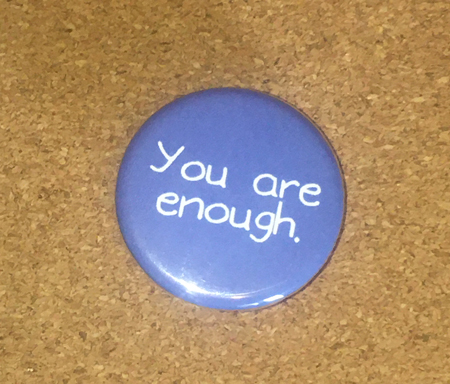
We spend so much energy in school and life focusing on narrow outcomes:
• excellence in math and literacy
• being stronger and faster
• attaining a university education
These are excellent goals. But many other traits or characteristics are overlooked or under-valued.
Ken Robinson describes a story of a student whose passion and skills to be a firefighter were spurned by a teacher as not good enough until, years later, his student saved his life in a car wreck.
A teacher at my 1980s high school was well known for rejecting a student’s desire and talents in music. Later, the student, Bryan Adams rocketed to fame and fortune.
As a boy, Ingvar had a tough time in school. His father told him he wouldn’t go anywhere in life. He was dyslexic but had an aptitude to think differently. Despite his challenges, he was good enough to build IKEA from a tiny business to an enormous company.
Stephen Wiltshire, as a child, would not speak. His language abilities were minimal. He didn’t socialize well. But he had an amazing ability to memorize enormous details – enough to reproduce cityscapes on paper from memory. He is now a world-renowned, architectural artist.
Many real superheroes start out with enormous challenges.
With support, tenacity and/or good fortune, they discover their (sometimes hidden) talents were more than good enough.
As a teacher, I support students’ challenges.
More importantly though, I seek to recognize students’ true talents and help them shine. They are enough. We just need to discover their true strengths to let them shine!
#1148 The Power of Classroom Music
I’m not an accomplished musician.
Or a drummer.
But my drum has the power to move people and change behaviour patterns in elementary classes..
It’s magic, almost.
With a new group of students the drum is the one that does the talking. As students enter the classroom a simple drum-beat greets the students. And then there is silence. And repeat. Student intrigue kicks in. Students gather quickly. Someone risks clapping the beat in response. I smile. The drum beat repeats and more students join the beat in response.
The drum sets the direction. Everyone quickly engages.
It’s a lovely tool to help with transitions and attention.
As familiarity develops, I choose a student that follows expectations to take over the drumming transitions.
I have met few students that have not been excited about the opportunlity of drumming. The drum turns into a powerful tool that helps shape student behaviour and experience.
I’m still a novice drummer but the music it performs is magical.
The Ontario College of Teachers found out about my drumming and included a segment in their journal “Professionally Speaking.” See page 32/33.
#1146 Secret Learning
Shhh!
Don’t tell them they’re learning.
But keep up whatever keeps students excited.
A Finnish teacher describes her kinder class’ “secret” learning as they learn early math and literacy through very non traditional activities such as stomping puddles. I’ve seen children gleefully learning traditional material in puddles, mud and snow with full engagement. If they are enjoying their activities, they will be learning.
Before modern school, people supported their life through trades, skills or professions for which they had aptitudes. They learned what they liked to do or where they had skills. And the learning was not a chore. In essence they were experiencing secret learning – following their passions or skill sets…
And so secret learning can support many modern students – challenged or traditional. Allow the student to learn through their passions and the learning becomes easier…
What early learning expectations relate to frogs?
• Math – Early numeracy: Count the digits (fingers/toes).
• Language – Vocabulary: Describe how the frog feels.
• Science – Habitats / Life.
For more advanced learners more complex passions can draw out their learning.
The biggest challenge of “secret” learning? Time and resources to connect with students…
#1144 Too Safe?
“Can we be too safe?” a parent asked me after learning about our day’s adventure.
We had hiked a long looping trail. During snack the children realized we were high on a ridge just above our starting point. They wanted to take the short, steep direct route back to the start.
What came out of my mouth was the uncertainty about the potential dragons in their caves and the possibility of boiling pits of lava.
What was in my head was the steep, & rocky descent with snow, ice and unknown cliffs as well as my unfamiliarity with that part of the forest. Also, I was well aware I was solo with children under 12 years of age.
The students could guess there were likely no dragons and lava. But while discussing the real risks they started to understand the challenges of the unknown descent. I promised I would investigate the steep forest in the week ahead… and we hiked the long, safe way down.
After more solo exploration during the week I was satisfied we could descend safely as a group. The next week we retraced our uphill expedition and discussed how we could descend safely. We were practicing “risky play.”
Different groups need different levels of support to explore safety and risk. But, if asked to analyze risk, people are usually very capable to assess what is safe for them.
We had a good experience. We weighed the risks and found ways to minimize the hazards. The children practiced the valuable skill of testing their perception and reality of safety.
Regulating Risk
I often see or hear of students denied experiences that offer the ability to develop their self-regulating sense of safety. Managed scenarios can help build self preservation, self awareness and a better ability to stay safe in life.
When I teach at Forest School we talk a lot about risk and safety…
“Can we climb that tree?”
“What do you think?…”
We talk about hazards, risks and what is reasonable. Students usually come to a reasonable conclusion with support and guidance. As we explore more, students get better at assessing risk and regulating their own limits:
“Can I go higher?”
“What do you think?”
“I think this is high enough for me…”
Telling vs Learning
A couple of years ago, I picked up my own son from school on our bikes on a cool spring afternoon. I asked him to put on his coat. He told me he didn’t need one. He needed a coat to stay warm. But I said “Ok.” We started riding. He lasted less than a minute before stopping because he was cold. He decided to put on his coat…
Instead of being told he needed his coat, he learned he needed his coat.
Big difference. It’s called experiential education.
Can we, as parents, teachers, educators be too safe?
Hmm. We can teach risk assessment, regulation and safety with careful planning and management of “risky play.”
#1143 Teacher Directed vs. Student Directed Learning – Which is Better?
Recently, I observed a student doing nothing, quietly, in a classroom. I approached to help them clarify, support or initiate their work. To me, it was clear what was going on. They were BORED.
I confirmed my suspicions through a direct question. I was correct. At this point urging them to complete the assignment does little to help them learn.
Teleport to a different environment where children are playing* on their own terms: Learning happens by default because they’re engaged in something that interests them. They’re experimenting. They’re trying new things and they’re learning.
* I use the term “playing” with trepidation. Many consider playing to be the opposite of learning: “learning is serious business. Play is frivolous…” Two thinkers in education – Vygotsky and Sobel suggest play grounds learning.
Vygotsky suggests children learn significantly through social interactions. Most commonly, social interaction for children includes play.
David Sobel suggests there are seven kinds or motifs of play. Like Vygotsky, Sobel places much emphasis on significant learning through play.
Anecdotes from prominent people also suggest the validity of play as a conduit to learning:
In ‘Boy‘ his childhood memoir Roald Dahl confesses of only two memories from his formative kindergarten learning days. “I can remember oh so vividly how the two of us used to go racing at enormous tricycle speeds down the middle of the road and then, most glorious of all, when we came to a corner, we would lean to one side and take it on two wheels.”
His description is of play but learning underlies the experience: balance, fine motor control, social skills, risk analysis.
Steve Nash, NBA superstar and multiple time MVP said “I’ve worked very few days of my life.”
Again, through persistent play Nash became incredibly talented and successful at his niche skill – basketball.
I play, teach and learn one day a week at Forest School. Through recent observations of students’ play with rope I experimented with learner led and teacher led learning.
I often have rope in my Forest School pack – it’s a versatile and practical tool that has many uses. A student became interested in using the rope to help her get up a tree. After some initial student investigations she started asking about pulleys. I developed two scenarios – a teacher directed “lesson” about the benefits of pulleys and some unstructured rope/pulley play time – for the students. I observed and learned.
The “Lesson” (ie Teacher Directed)
To demonstrate the benefits of pullies and rope I set up a “three-to-one” and “one-to-one” pulley system. I suggested students haul a weighted toboggan to experience the differences in pulley systems. Students followed the directions and successfully completed the challenge. There was no enthusiasm and little further exploration occurred.
The “Play” (ie Student Directed)
I dismantled the climbing equipment and left it for the students to investigate as they wished. Slowly, the real learning began. The “pulley student” picked up some equipment and started experimenting (playing) with building her own system. She built, with assistance, an elevator contraption to haul her friend up a tree.
Another time students initiated play with toboggans and the climbing equipment. They attached ropes to toboggans and started playing. From an educational perspective I observed practical use physics, forces, ropes and social problem solving skills being learnt with far more enthusiasm than my lesson. The students also spent far more time with their self directed “play” than with my lesson.
Observing these different learning scenarios (teacher vs student led) confirmed the power of play. The teacher directed scenario (3:1 & 1:1 pulley toboggan) had value but students quickly lost interest. The other two, student led scenarios captivated students for significantly more time. Because of play their interest was sustained. Greater and more significant learning happened.
I see both pedagogical platforms – teacher directed and learner led / play based scenarios – have value.
Teacher directed environments allow students to be able to replicate information deemed important by others. However, the risk and possibility of limited retention, disengaged students, and increased misbehaviours is much higher in a traditional teacher led scenario.
Student directed play and learning increases engagement, flexible directions and social development of ideas.The risk of missing specific elements of a curriculum expectation is easily possible if the student’s interest veers away from the mandated curriculum material.
There is great potential for enormous learning if the learner led model is supported by arms-length support from the teacher to provide connections and culminating summation of concepts. The interest, intrigue and final outcome can be so much more significant if play is initiated and followed through by the students.
My reflection and growth in education leads me to more questions:
• I ponder the correct balance of learner led and teacher/school board/ministry directed curriculum.
• Is there a danger of too much student directed learning?
• Will students miss important, foundational learning – base math, elements of literacy – because individual students lack interest?
• Or will they naturally find a need for a rounded education on their own?
• How much influence should the teacher project onto the learning canvas of the students?
#1142 Ten Year Blogging Anniversary
Ten years ago today I published my first blog post.
Since then 1142 diverse entries have followed my career.
In 2008, my web tech / comms / librarian wife suggested it would benefit my business. I secretly thought she was crazy but I followed her advice. Of course she was correct – the blog served my photo/arts workshop business and teaching career well.
The early posts now make me chuckle. Below are some memorable moments:
• Workshops
• Photography for Communications Professionals
• Preston Studio
• Ottawa Photo Contest and Results
• Ottawa Photo Newsletter
• Online Photo Program
• Watershed Art Project
• Teaching Reflections
Keep reading and contributing.
Thanks for following…
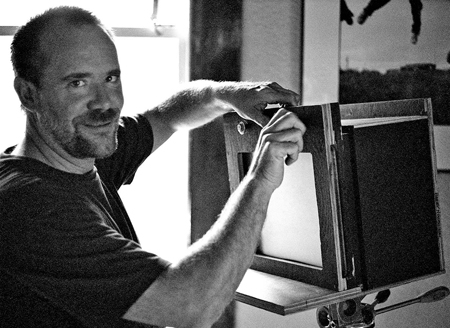
Harry and his big plywood camera

